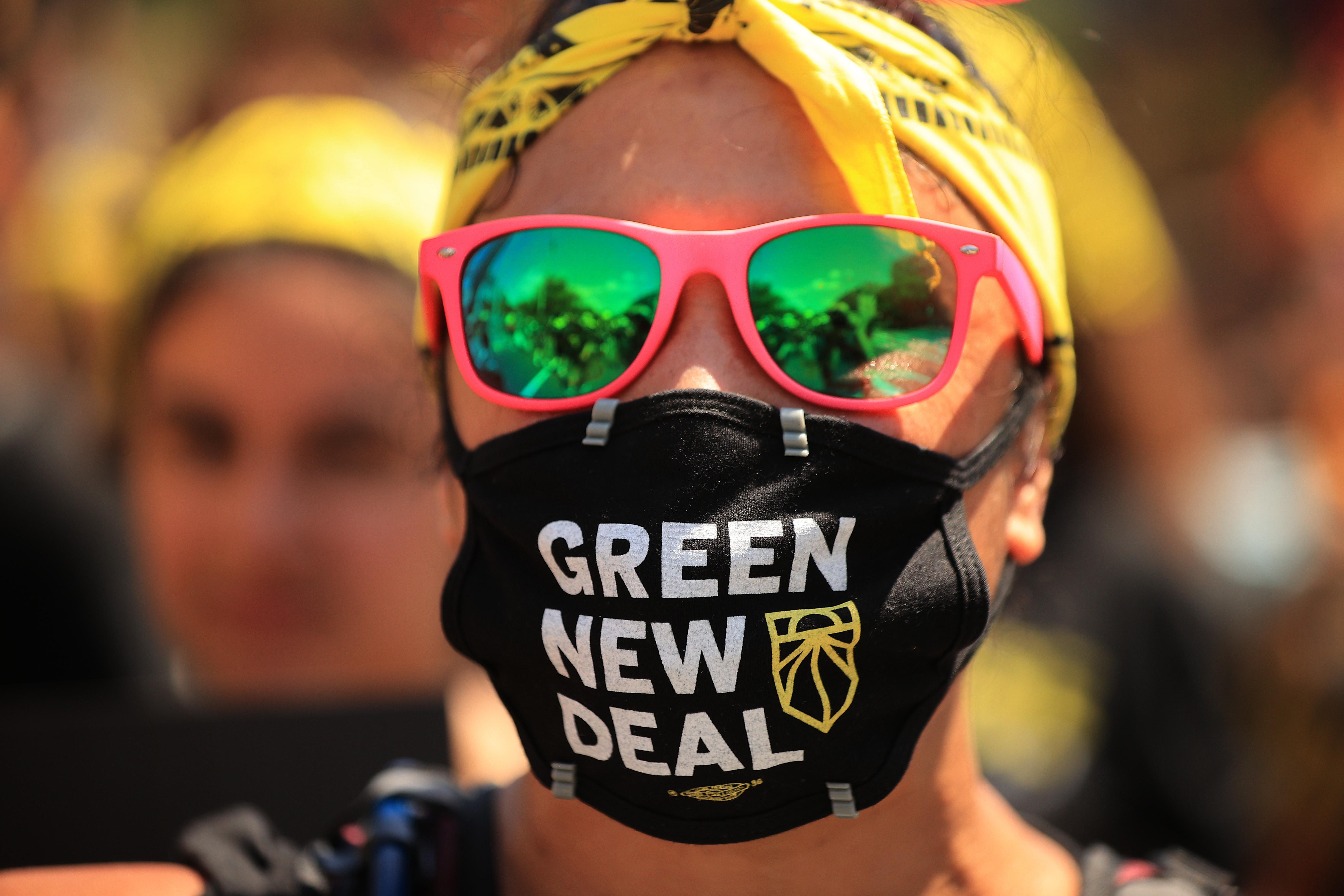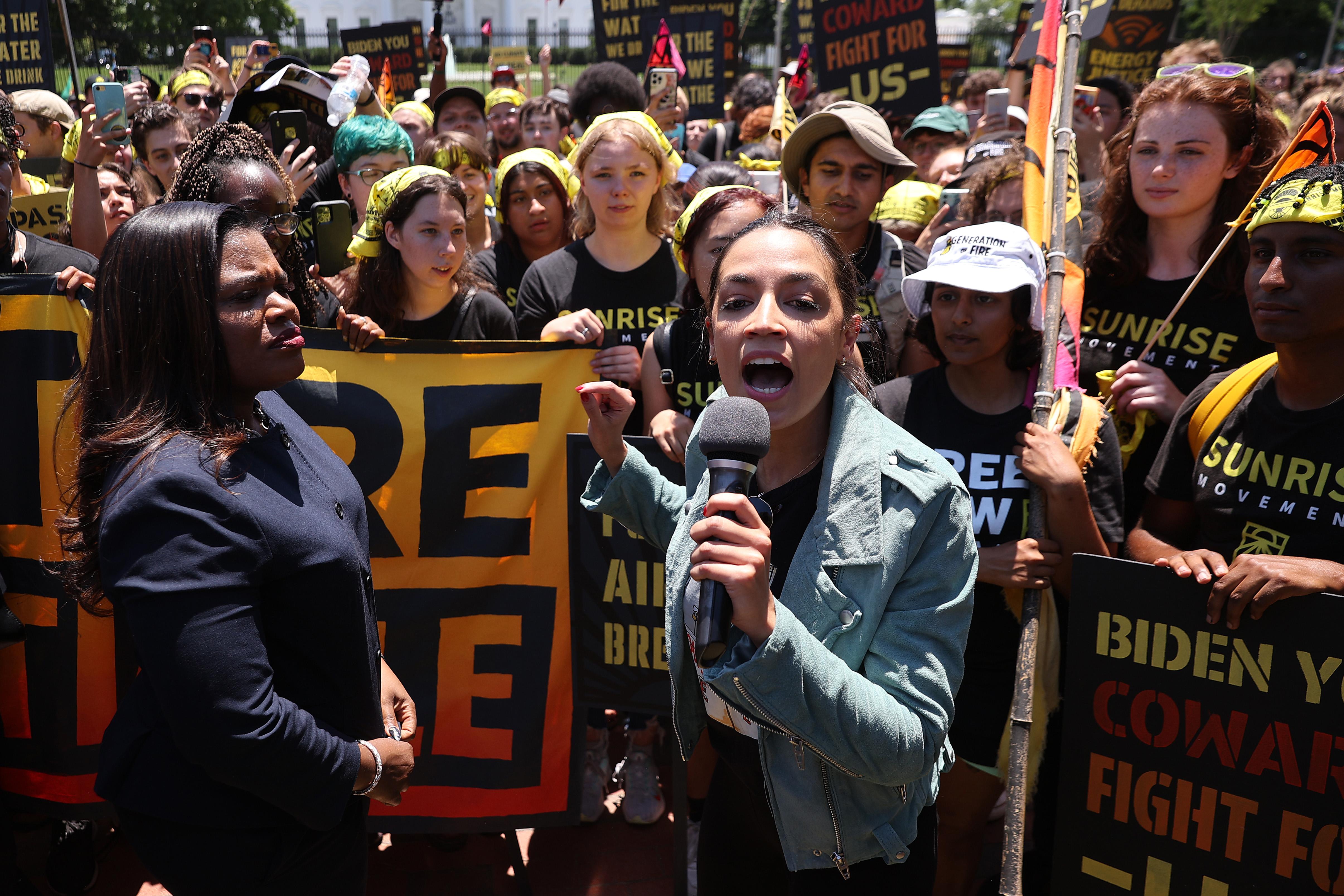All About the Green New Deal—Common Myths Debunked
The Green New Deal is an overarching bill meant to restructure the way the U.S. interacts with the climate. Here's a summary of its potential impact.
July 26 2021, Published 11:19 a.m. ET
Sponsored by New York Representative Alexandria Ocasio-Cortez (D), the Green New Deal is the latest iteration of calls for climate regulation previously spearheaded by Thomas Friedman, the United Nations, and former President Barack Obama. It's a sweeping bill meant to reflect the scope of change that former President Franklin D. Roosevelt instituted in his post-Great Depression programs.
So, what exactly is the Green New Deal? Here's what we know about the bill and what to expect moving forward.
What's in the Green New Deal?
The Philadelphia youth organization Sunrise Movement approached Ocasio-Cortez with the Green New Deal in 2018. The Representative hopped on board. She even joined the organization in various protests. Now, she sponsors the bill, which includes various sweeping shifts.
- The Green New Deal wants to institute changes that would lead the U.S. to net-zero greenhouse gas emissions and 100 percent renewable energy.
- To do this, the bill proposes investments specifically geared toward communities that have been impacted by climate change, as well as investments in renewable power, clean energy manufacturing, zero-emission transportation, and sustainable farming.
- The bill also proposes broad infrastructure repair, affordable and energy-efficient power grids, ecosystem restoration, and hazardous waste clean-up.
- The Green New Deal would instruct the U.S. to collaborate globally for a more cohesive approach to climate change.
How much the Green New Deal could cost
In its original form, the Green New Deal is wildly expensive. Some sources mark it at a whopping $93 trillion, not only because of direct investments but also because of the funds it would take away from coal, petroleum, and natural gas.
President Joe Biden's Clean Energy Plan is modeled after the Green New Deal, but is much less ambitious. It would cost about $6.7 trillion, but only $1.7 trillion would come from the federal government.
What (and who) will pay for the Green New Deal?
In reality, any sizable climate plan would require federal, state, local, and private buy in. This means taxpayers and private investors alike will bear the brunt of it. However, one of the most ferocious symptoms of climate change is strengthened wildfires, which could cost half a trillion dollars in lost economic output annually by the year 2100.
Myths about the Green New Deal, debunked
Myth #1: The Green New Deal doesn't want cars on the road.
The reality: The Green New Deal doesn't have a bone to pick with cars. Instead, it's gas-guzzling cars it has a problem with. The shift would require EVs and energy-efficient public transport to replace current vehicles.
Myth #2: The average American will have to pay big bucks.
The reality: Corporations are one of the key contributors to climate change. That's why Biden has proposed a higher corporate tax and more aggressive capital gains taxes that would impact institutional investors the most. Those causing much of the problem should be held responsible.
Myth #3: The Green New Deal would cost more over the long term than inaction.
The reality: Frankly, climate change is an emergency and emergencies are expensive. Trillions of dollars are at stake in lost economic output, stemming from 1.8 percent of the U.S. GDP over the next 80 years.


